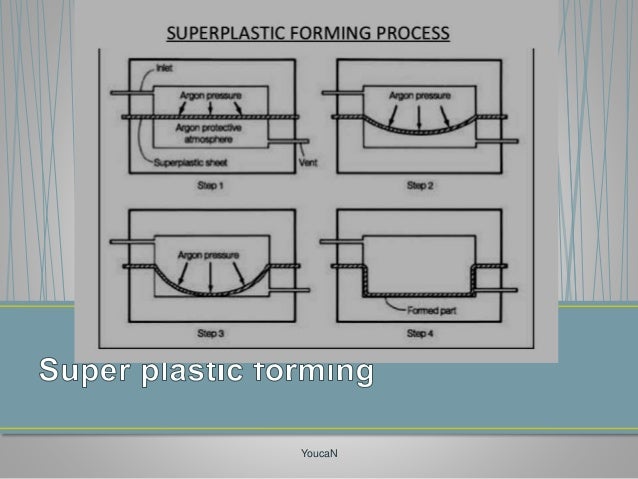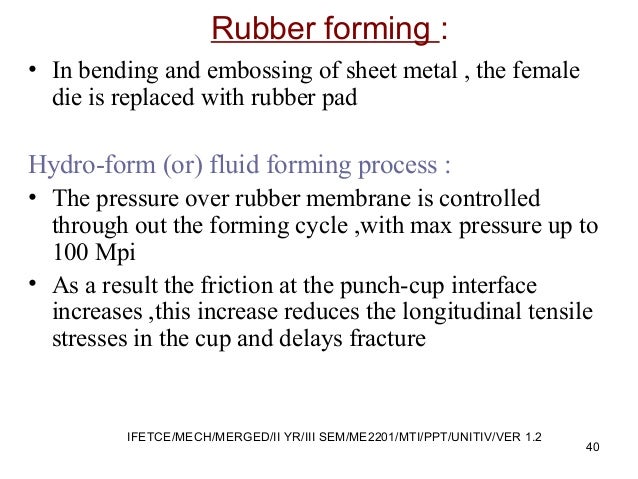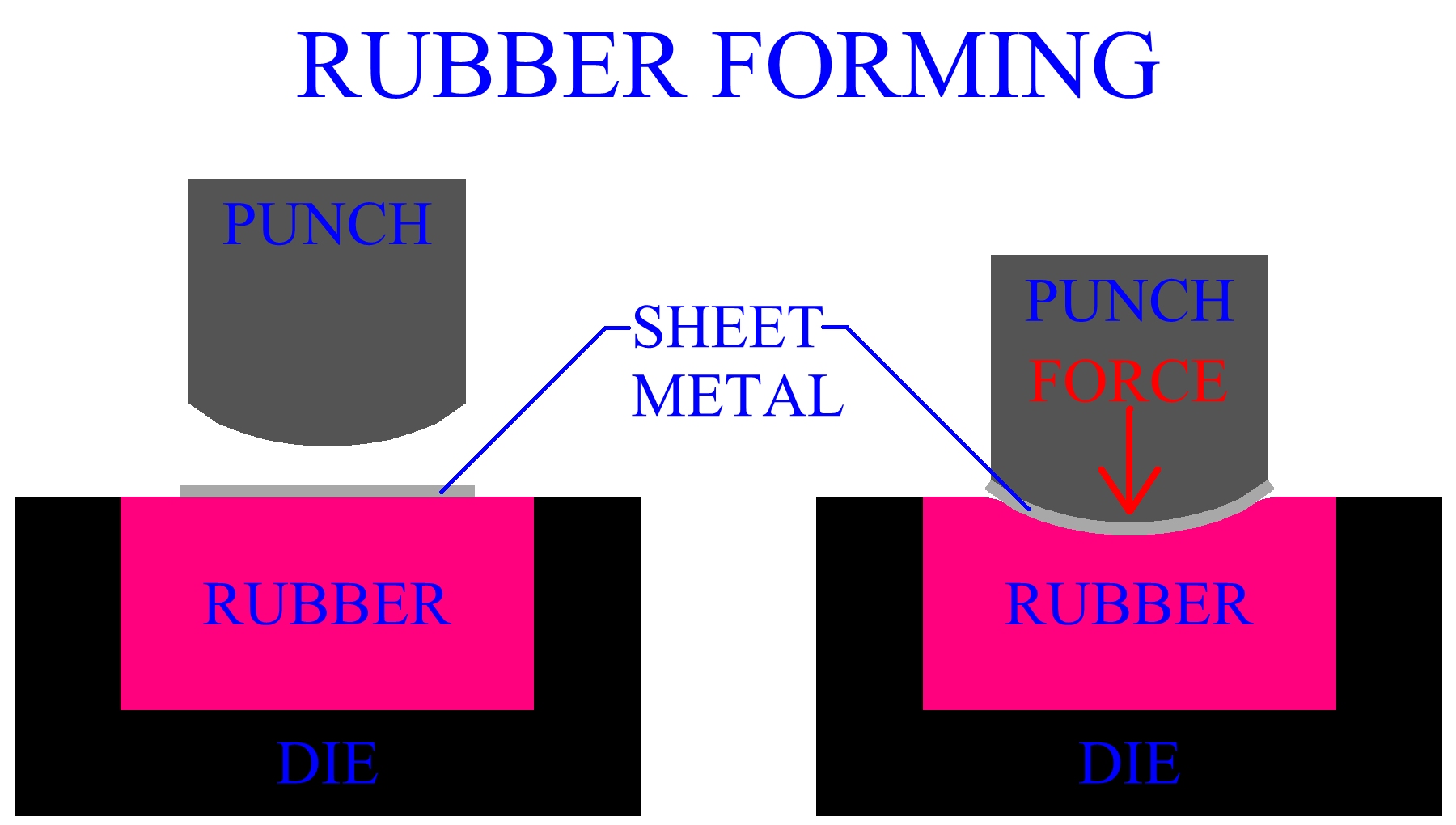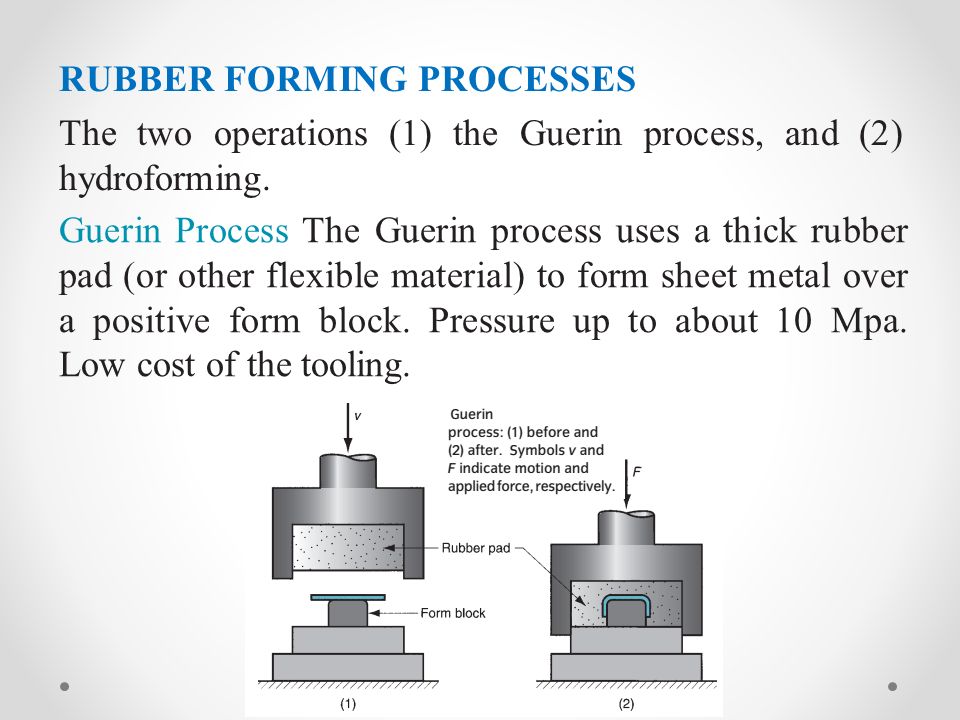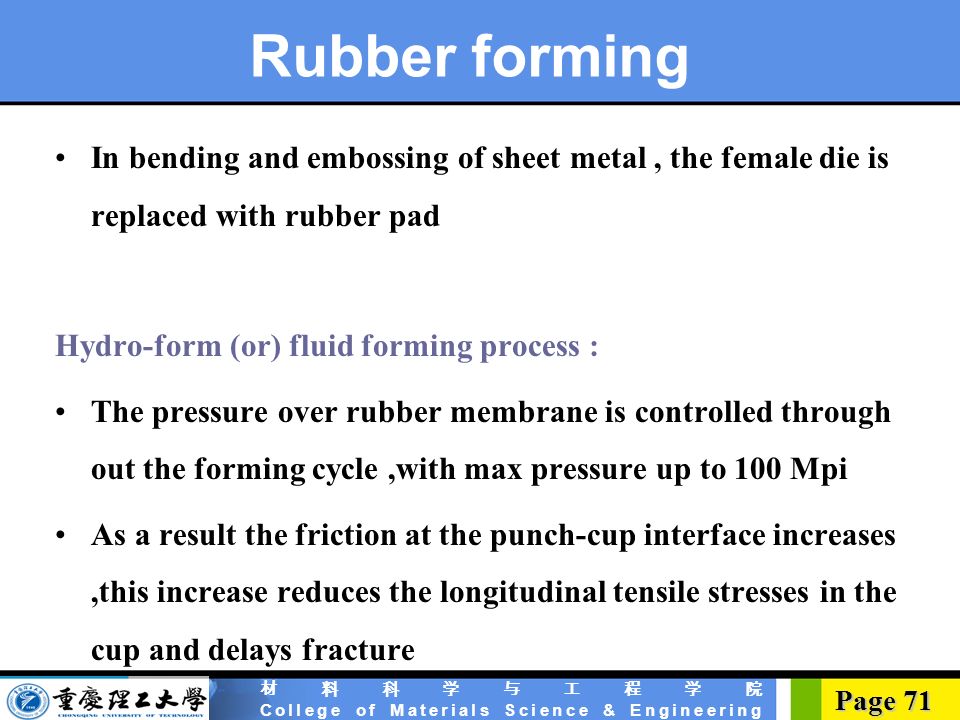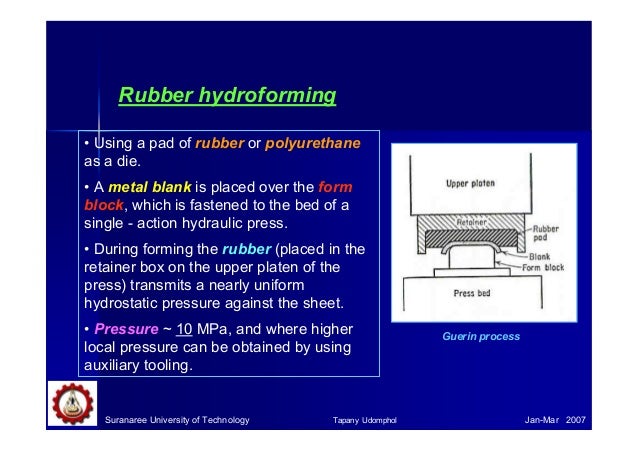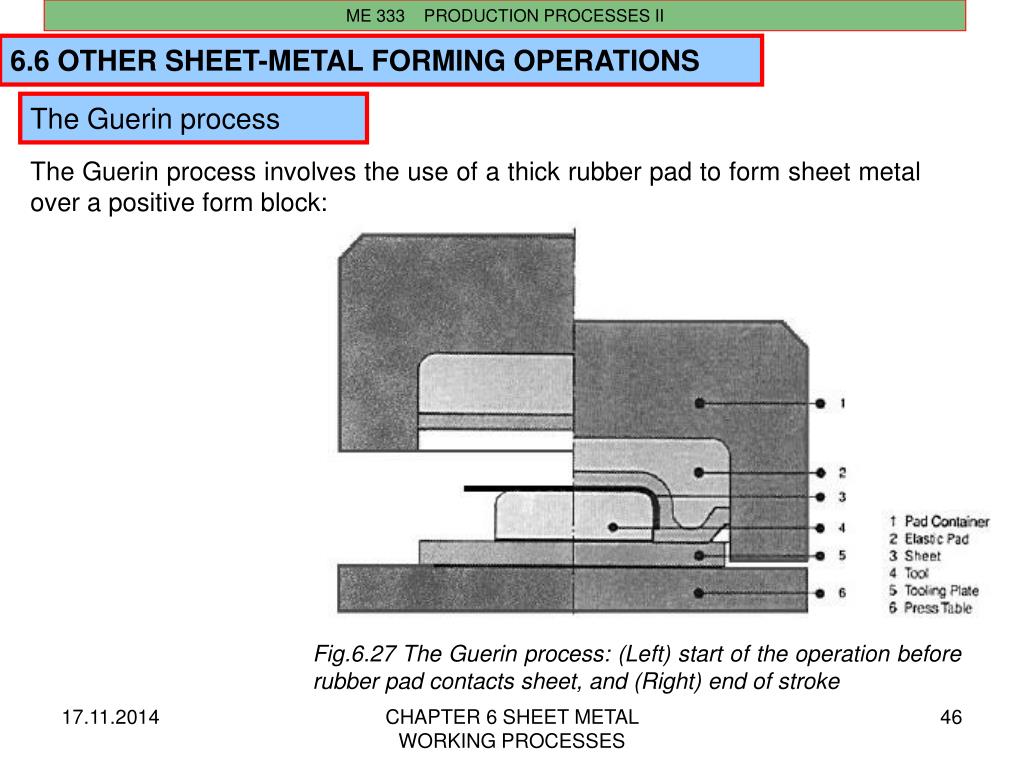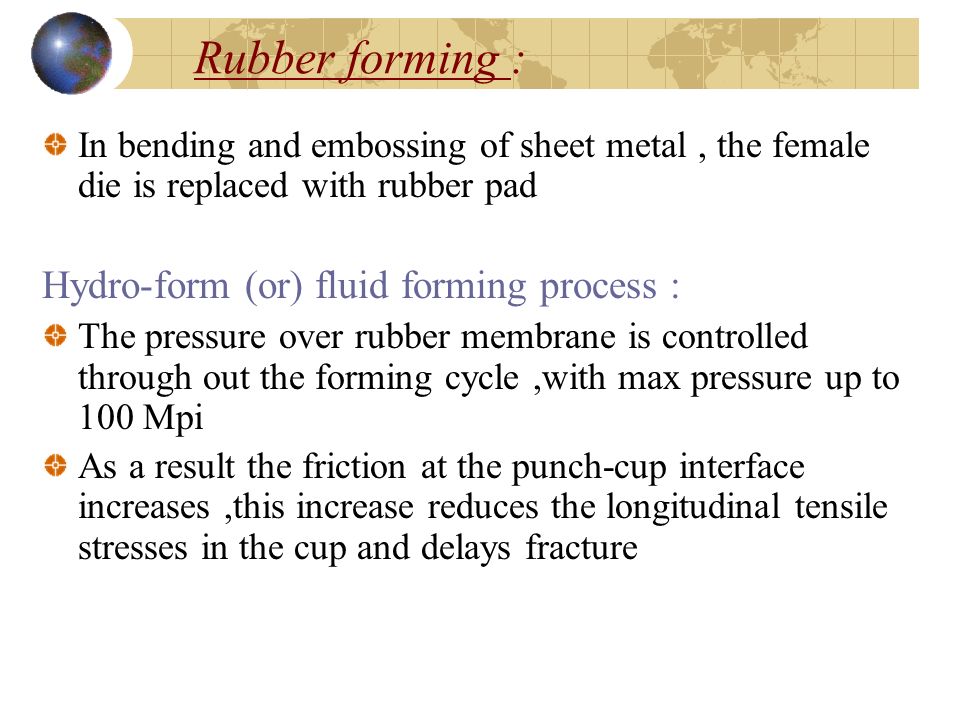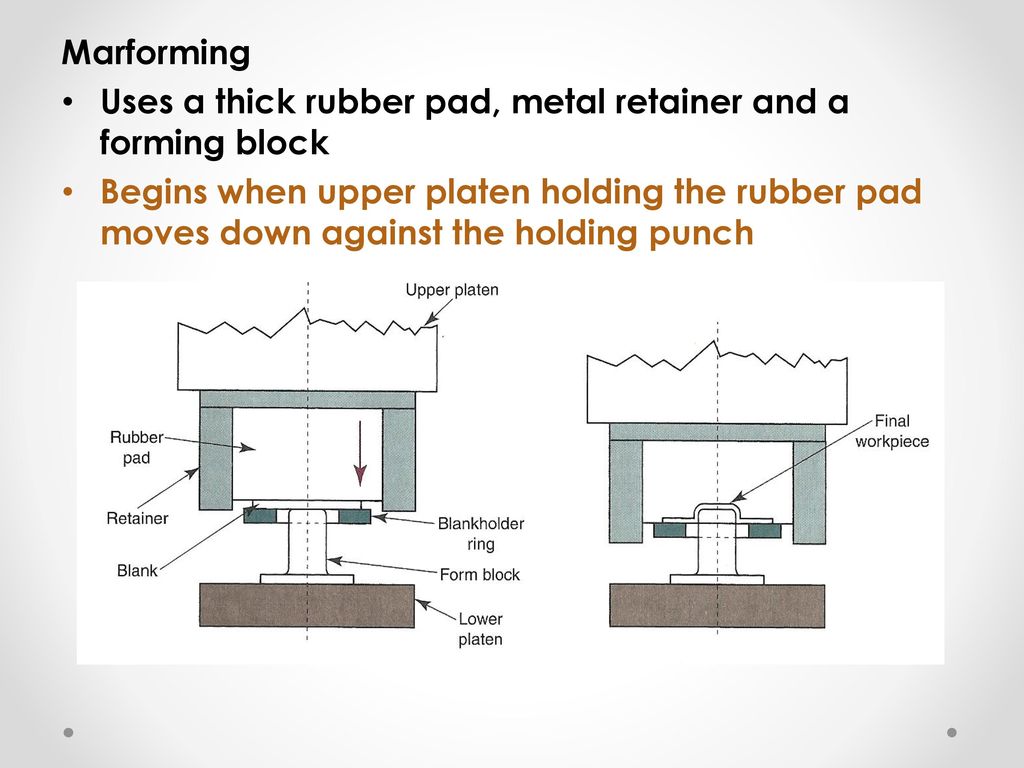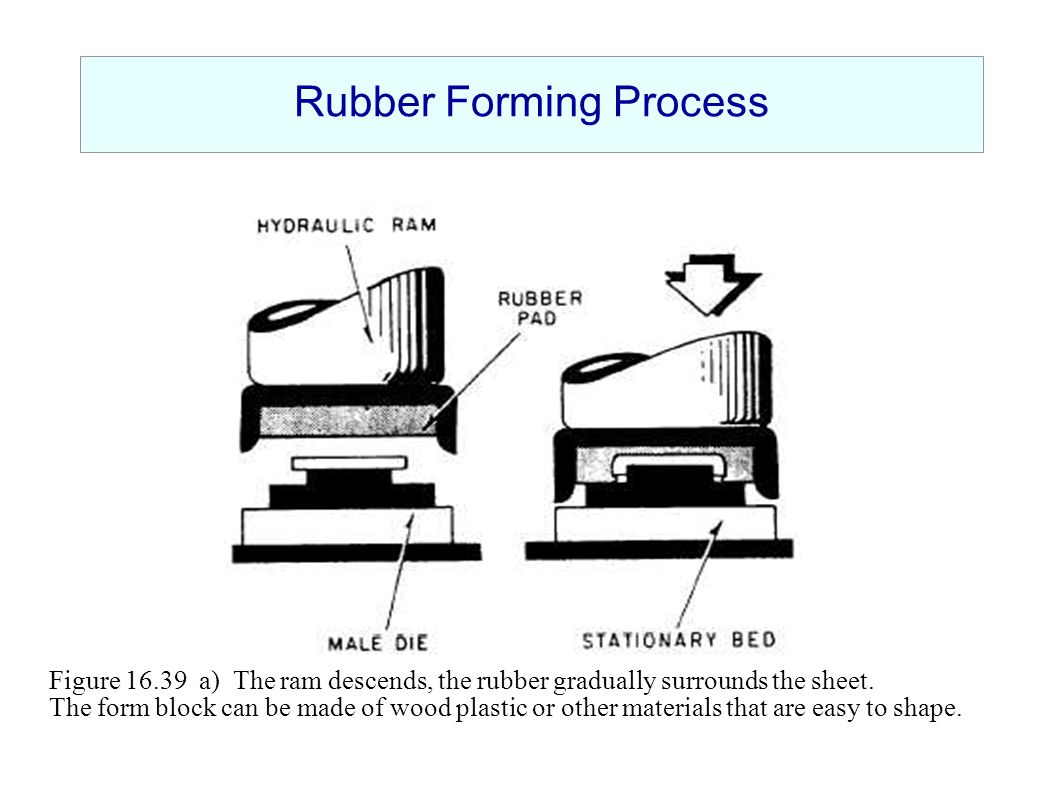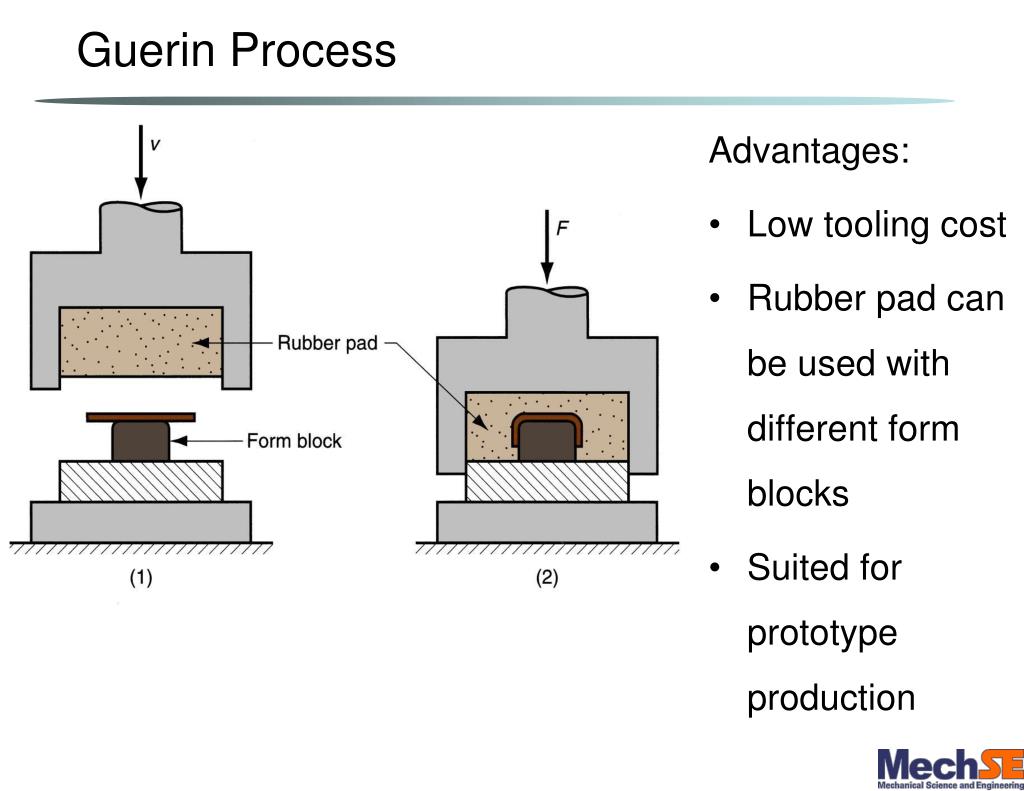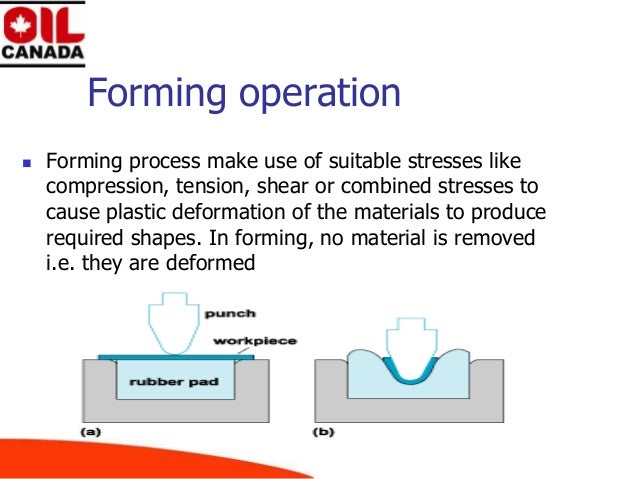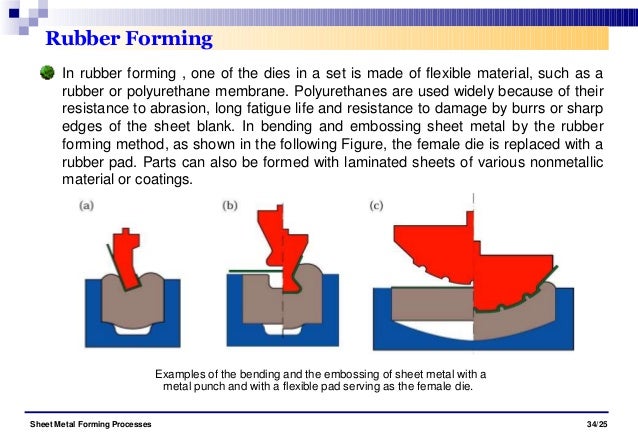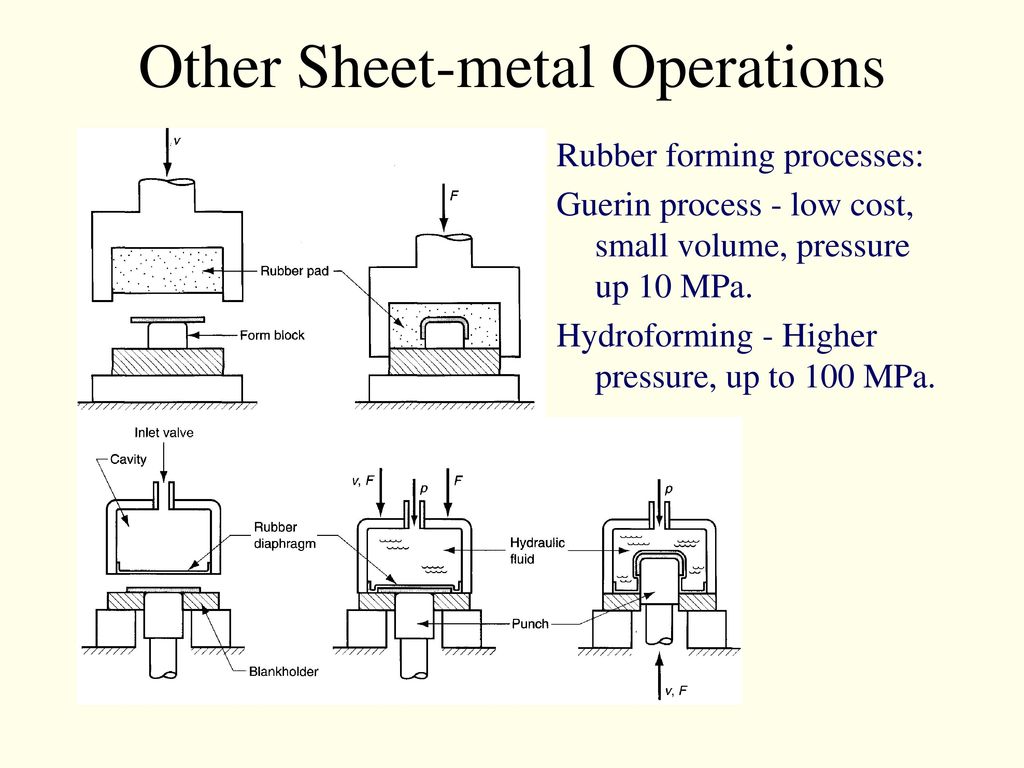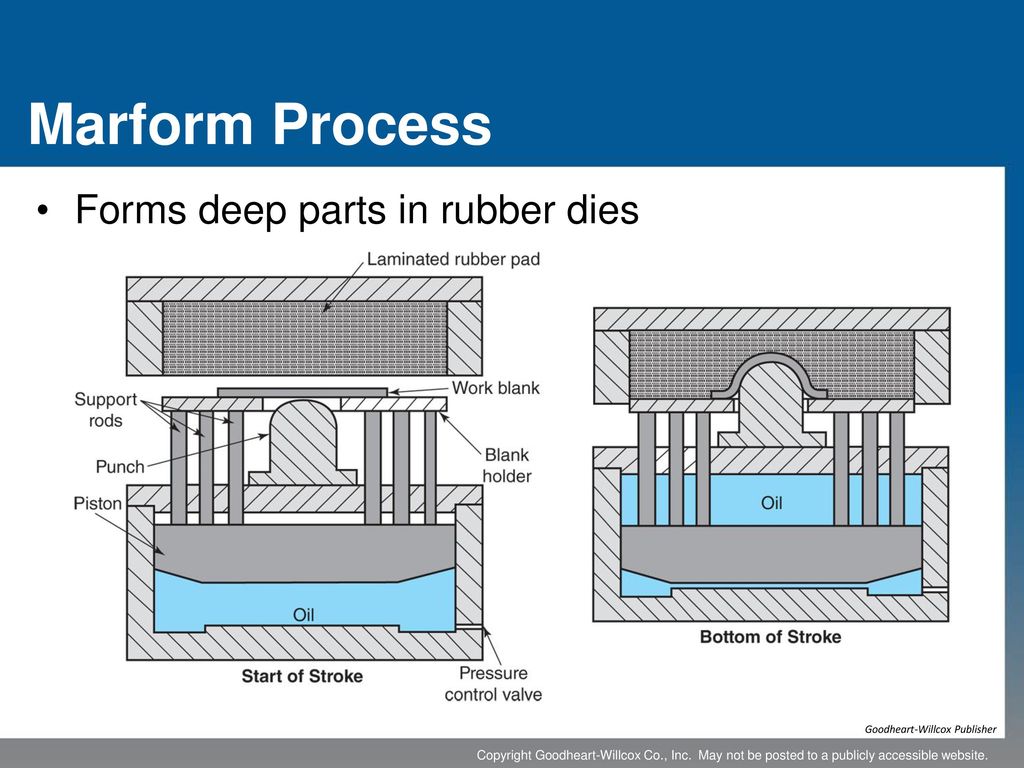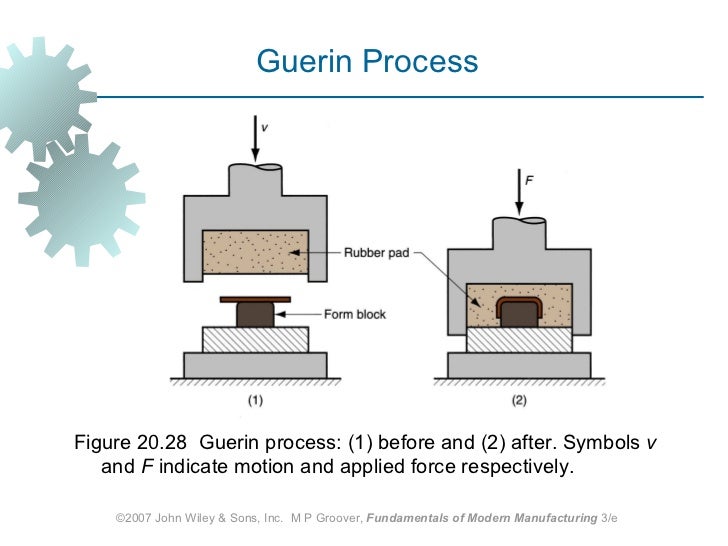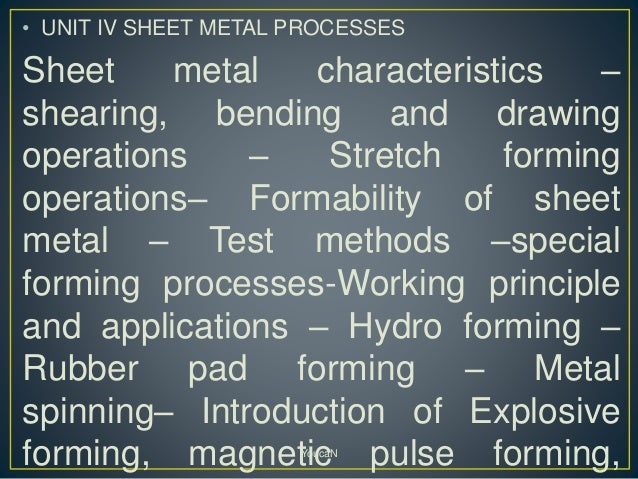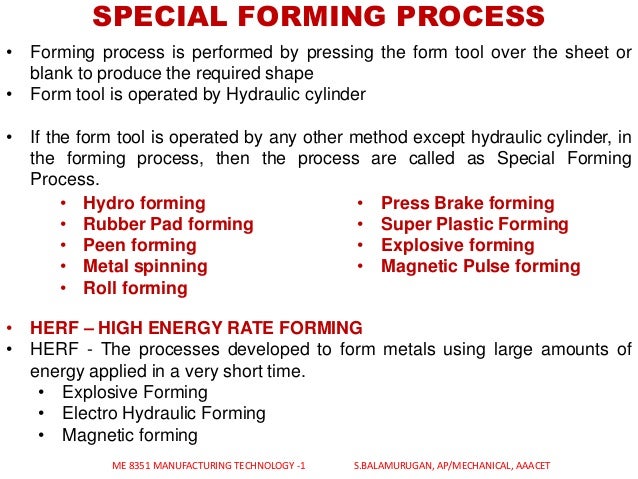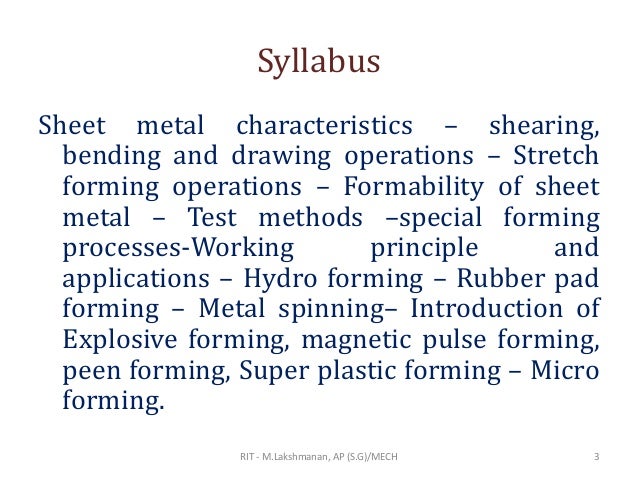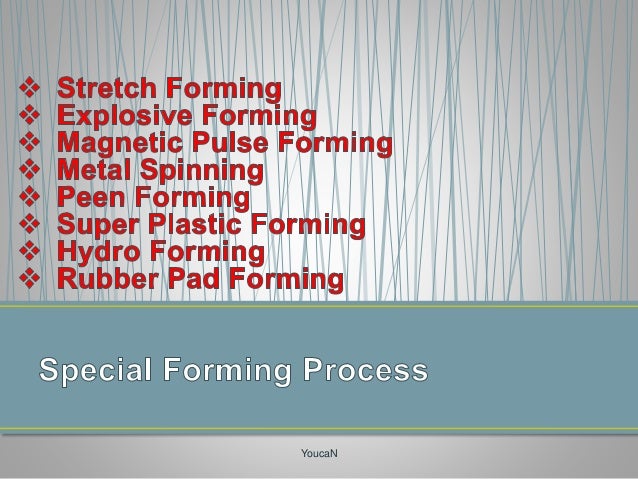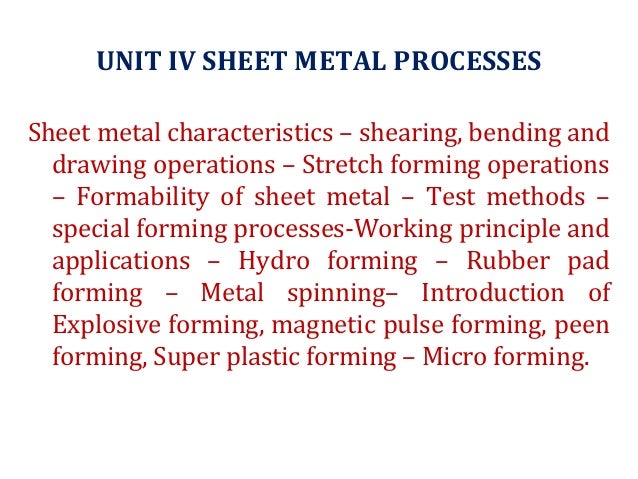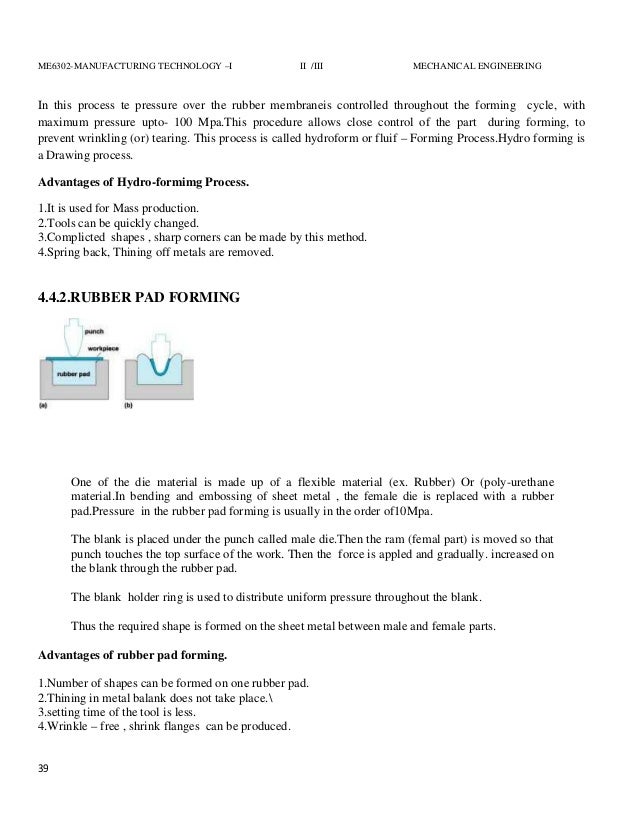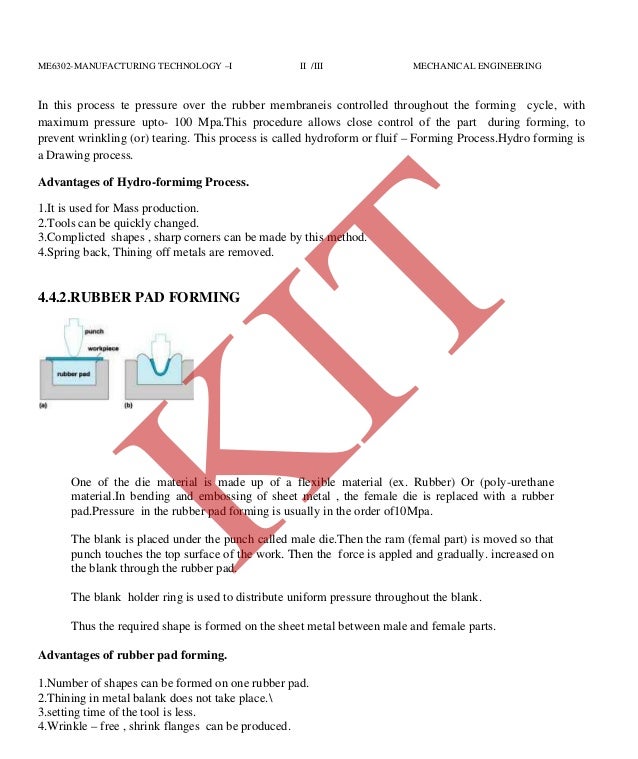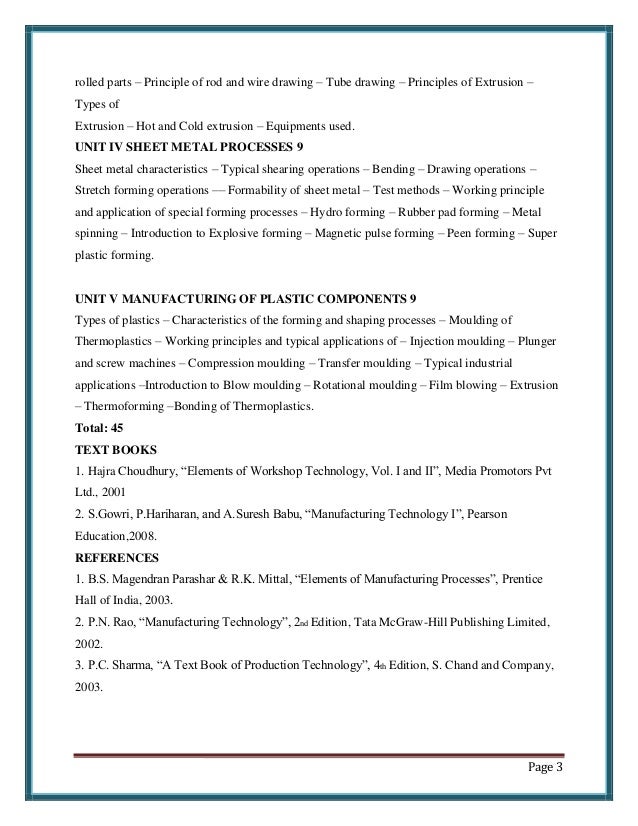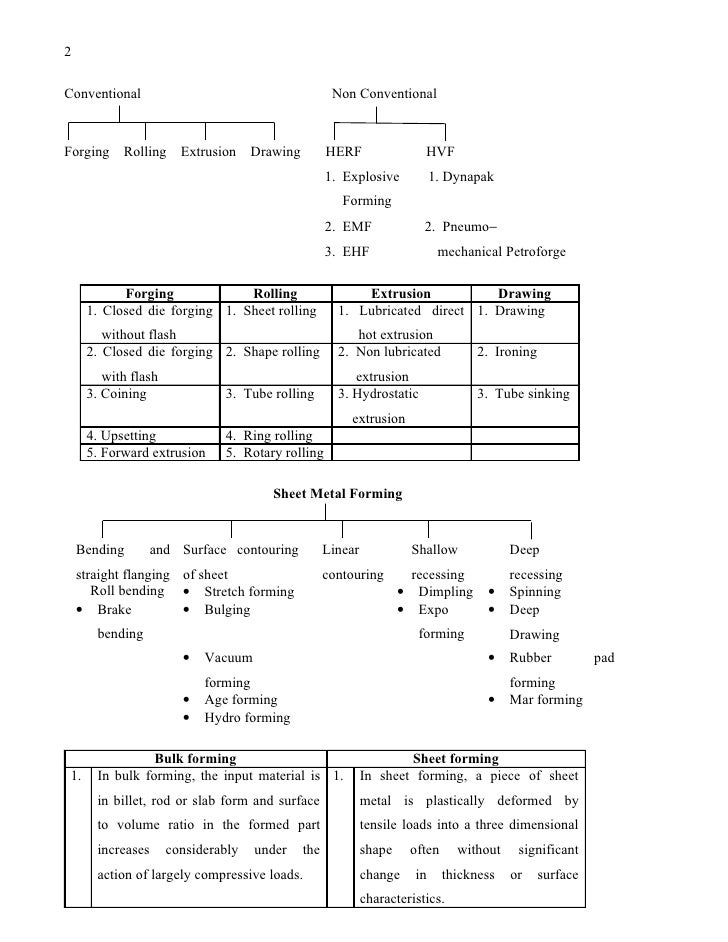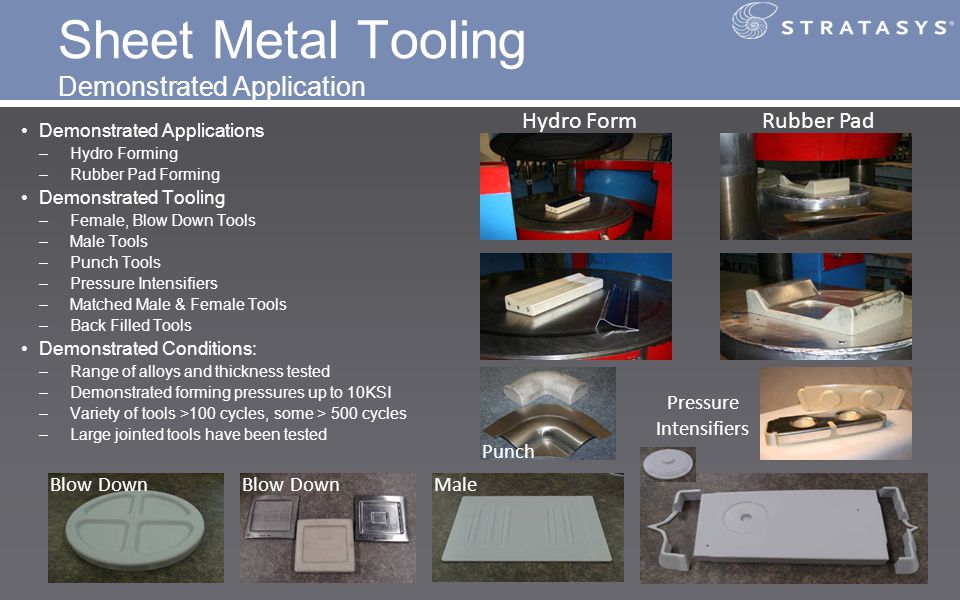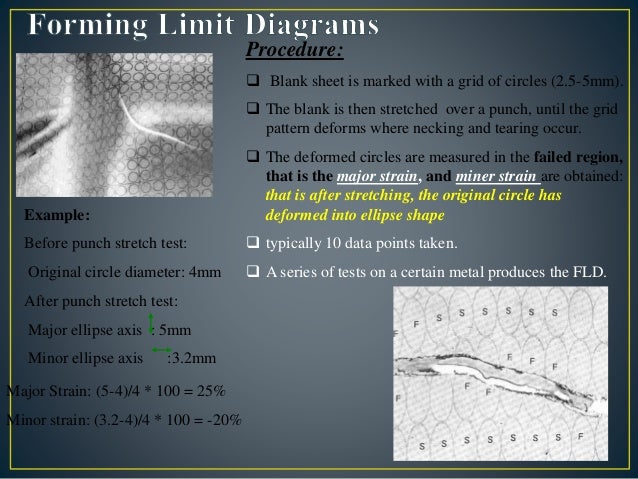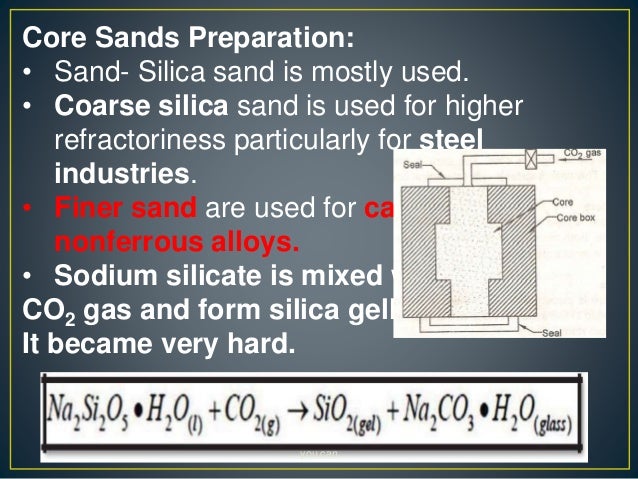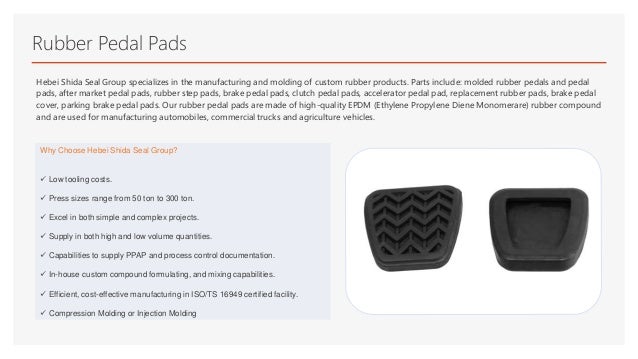Rubber Pad Forming Process Ppt

This allows the pressure that forms the work part to be increasedto around 100 mpa 15 000 lb in2 thus preventing wrinkling in deep formed parts.
Rubber pad forming process ppt. The rubber pads can have a general purpose shape like a membrane. During the rubber pad forming process the punch deforms the blank and apply large pressure 100 mpa over the blank. Although a large number of machine components are made from sheet metal with a thickness of up to 2 mm production of such parts is not economically viable in traditional dies which are designed for mass production. The difference is that it substitutes a fluid in place of the thick rubber pad as in figure 20 29.
Sheet metal forming 2 810 d. Hydro forming process hydro forming hydro forming is similar to the guerin process. Rubber pad forming is a sheet forming process in which one or more product related molds. The rubber pad forming process is also called as guerin process.
9 boothroyd dewhurst and knight. Rubber pad forming rubber pad forming rpf is a metalworking process where sheet metal is pressed between a die and a rubber block made of polyurethane. Sheet metal parts are deformed by the stamping process. 16 kalpakjian design for sheetmetal working ch.
Stamping elastic media rubber pad forming. The rubber die is forced on the blank and deform the blank into require shape. The pressure over rubber membrane is controlled through out the forming cycle with max pressure up to 100 mpi as a result the friction at the punch cup interface increases this increase. The form block is then machined according to each customer s unique specifications.
Our rubber pad forming process begins with form block a material made from resin board aluminum or plastic. Under pressure the rubber and sheet metal are driven into the die and conform to its shape forming the part. Cooper sheet metal forming ch. In bending and embossing of sheet metal the female die is replaced with rubber pad hydro form or fluid forming process.
Bridge bearing masonry pads handrail bearing pads pads between steel beams girders grates columns pads between bridge and roof beams and substructures shock and vibration isolation heavy equipment mounting pads railway tie pad applications pads underneath concrete vaults 18. The rubber pads used in the process are made of hard urethane with dimensions of 43 inches by 51 inches each about 1 5 inches thick. A beckwood 400 ton rubber pad forming press making 5 different parts in one cycle.

